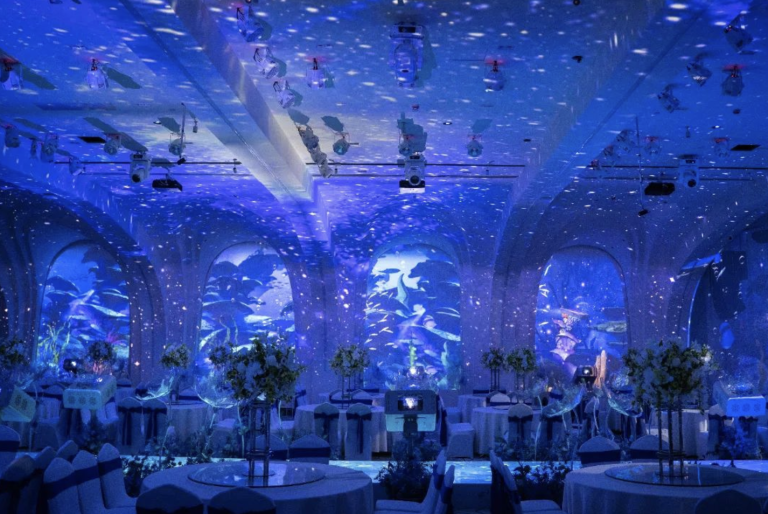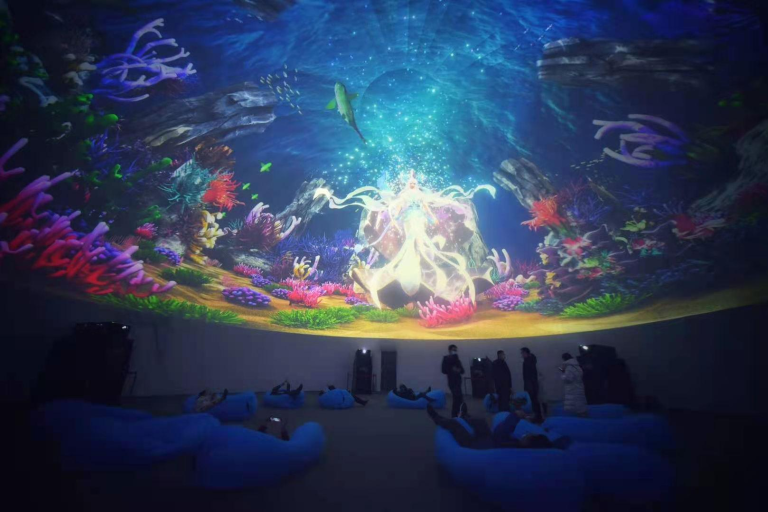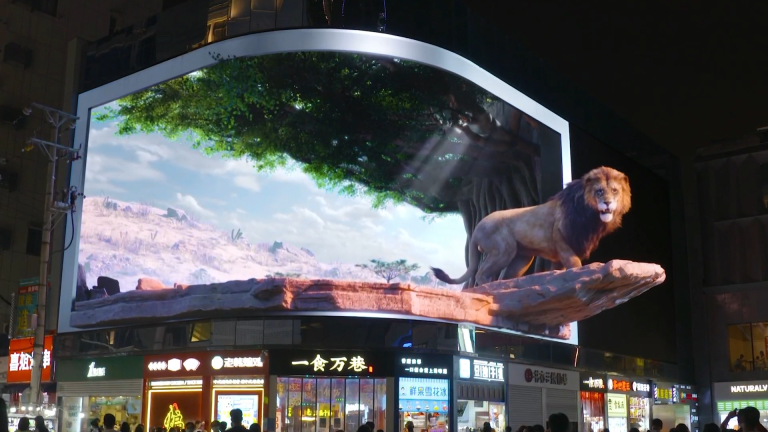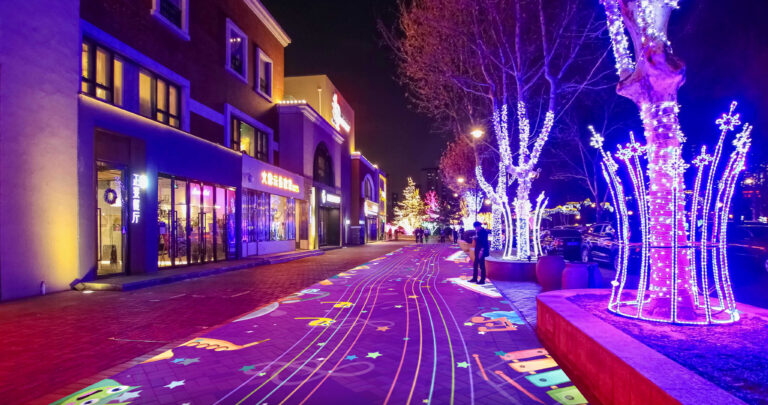How to Create an Immersive Room?
As immersive experience technology continues to evolve, creating a stunning immersive room has become increasingly feasible. Whether for entertainment, commercial displays, or restaurant upgrades, immersive rooms can provide an unparalleled sensory experience. In this article, we will explore common methods for creating immersive rooms, with a special focus on immersive projection, analyzing costs, advantages, and ideal applications.
How to Create an Immersive Room? Option 1: VR (Virtuele realiteit) Rooms
Features: VR headsets provide a fully enclosed view, immersing users in a virtual world. This is widely used for gaming, training, and immersive presentations.
Advantages:
- Fully immersive, allowing users to enter entirely different worlds.
- Interactive, making it suitable for gaming, education, and training applications.
Disadvantages:
- Requires wearing a VR headset, which may cause dizziness after prolonged use.
- Limited to individual experiences, making shared group interactions difficult.
- Confined by room size, restricting movement range.
- High content and game development costs, especially for custom or high-quality experiences.
- Limited capacity and the cost increases significantly if larger group experiences are needed.
- VR equipment requires dedicated personnel for setup and maintenance, increasing operational complexity and costs.
Estimated Cost: A single VR headset costs approximately $500-$3,000, excluding a high-performance computer and content development. Large-scale VR experience centers may exceed $100,000.
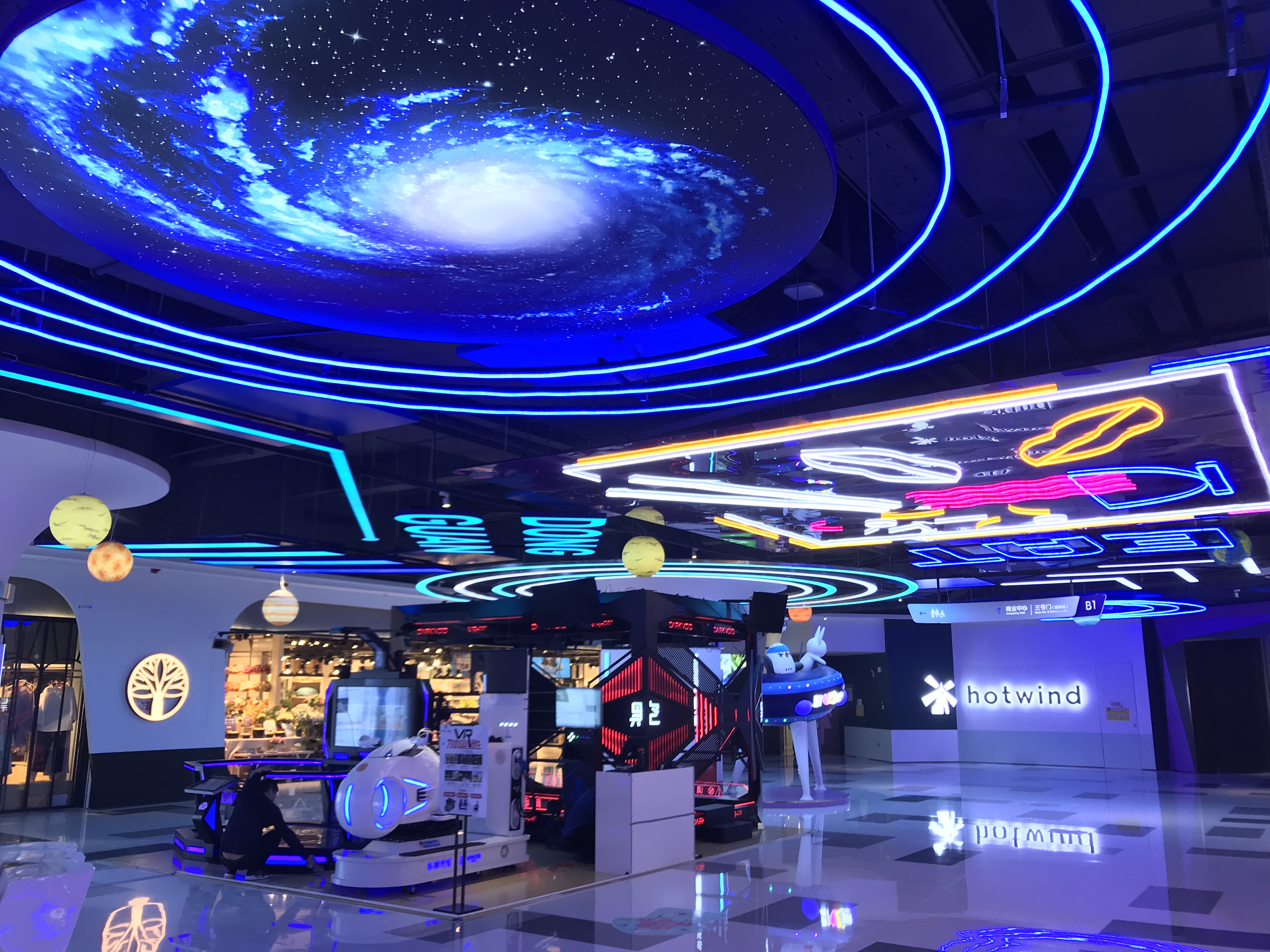
How to Create an Immersive Room? Option 2: LED Panorama Screen Rooms
Features: Uses LED screens to cover the walls and ceiling of a room, providing high-definition visuals and a stunning experience.
Advantages:
- High brightness and vibrant colors, suitable for high-end commercial displays.
- Capable of playing high-resolution videos, making it ideal for advertisements, tentoonstellingen, and theaters.
- Suitable for multi-person shared experiences.
Disadvantages:
- Very expensive, with high LED screen costs and complex installation requirements.
- High power consumption, leading to increased operational costs.
- Limited interactivity compared to other solutions.
Estimated Cost: LED screens cost around $1,000-$5,000 per square meter, and a complete immersive room could cost over $100,000.
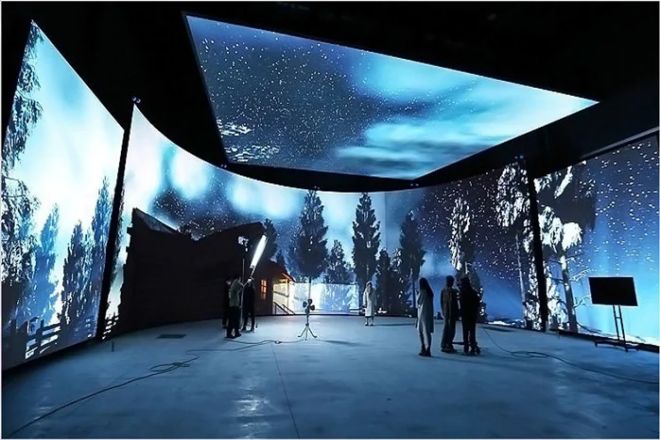
How to Create an Immersive Room? Option 3: Immersive Projection Rooms (Recommended Solution)
Features: Uses projection technology to display visuals on walls, floors, and ceilings, creating a 360° immersive experience. Suitable for restaurants, entertainment venues, and commercial displays.
Advantages:
- Lower cost compared to LED screens, making it a more affordable investment.
- Highly flexible, allowing projection content to be easily changed for different themes.
- Strong interactivity, especially when combined with infrared, radar, or laser sensors.
- Versatile applications, including restaurants, tentoonstellingen, and artistic installations.
Disadvantages:
- Affected by ambient lighting, requiring controlled lighting conditions.
- Requires precise projection mapping and blending to ensure seamless visuals.
- Projector lamps or light sources have a limited lifespan and need periodic replacement.
Estimated Cost:
- Single projector: $2,000-$10,000
- Blending system (e.g., Guangying Shark or GeoBox): $5,000-$20,000
- Interactive sensors (infrared, radar, laser): $1,000-$5,000
- Total project budget: $30,000-$100,000, depending on the setup.
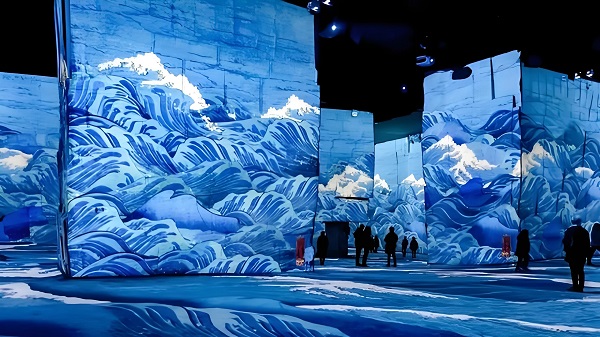
2. Why Choose Immersive Projection?
Compared to VR and LED screen setups, immersive projection offers flexibility, customization, and cost efficiency. Especially for restaurants, hotels, and commercial exhibitions, immersive projection can enhance customer experiences, increase average order values, and boost brand impact.
For example, our company utilizes Guangying Shark blending systems En distributed fusion technology to achieve seamless projection over large areas. Combined with interactive sensors, this creates a truly immersive dining or exhibition experience.
3. How to Create an Immersive Room? Comparison: Choosing the Best Immersive Solution
| Solution | Suitable For | Cost | Interactivity | Maintenance |
|---|---|---|---|---|
| VR Room | Gaming, Education, Training | Low-High (depending on capacity) | High | High |
| LED Panorama Screen | High-end Exhibitions, Advertising | High | Medium | High |
| Immersive Projection | Restaurants, Exhibitions, Thematic Spaces | Medium | High | Medium |
If your goal is to create a highly immersive yet cost-effective space, then immersive projection is the best option. Whether upgrading restaurant ambiance, enhancing brand experiences, or developing artistic interactive spaces, immersive projection offers flexibility, variety, and stunning visual impact.
4. Conclusion
There are multiple ways to create an immersive room, each with its own strengths and weaknesses. For businesses seeking an affordable yet high-quality immersive experience, immersive projection stands out as the most cost-effective choice. If you’re considering implementing an immersive projection solution, we offer professional support—from hardware selection to content creation—to help bring your vision to life.
Want to learn more about immersive projection? Contact us to explore how we can create a truly immersive experience for your project!


